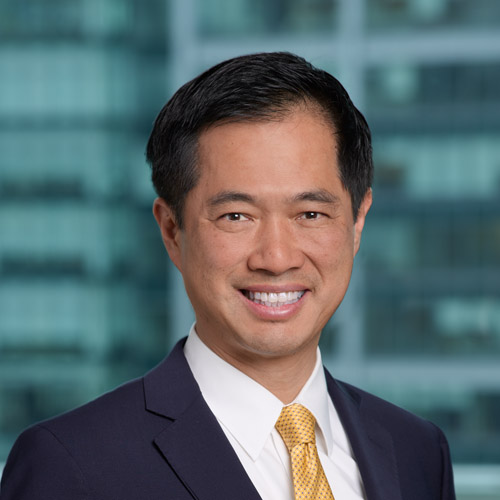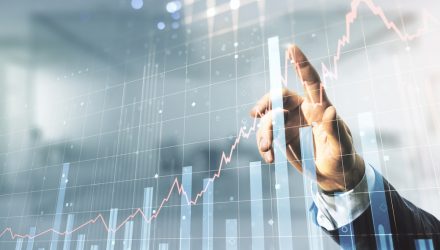ETF Trends interviewed three sources about active ETFs, why financial advisors are opting for these investment solutions for clients, and how these factors have changed in recent years. Each source responded to the same questions in their respective interviews.
The industry experts we spoke with were: Nick Reilly, founder and wealth advisor at One Day LLC; Paul Ma, lead portfolio strategist at Fidelity Institutional; and Myles Manning, asset management strategy consultant at Indefi, a strategy advisor for asset managers.
A Shift From Passive to Active ETFs
What are wealth advisors typically trying to achieve by using actively managed ETF strategies?

Nick Reilly: I think over the last 10 years there’s been a large focus on passive ETFs, for good reason. The markets had gone up and it was hard not to make money. In more volatile markets, and with the current economic and regulatory uncertainty, advisors have been able to have equal-weight or buffer strategies that reduce that risk, especially in bond and alternative strategies.
[The appeal of active ETFs is] largely from a risk management standpoint. We can’t be specialists in everything. The goal for me is to mitigate some of the downside risk, but still participate in some of the upside.

Paul Ma: I’m the head of portfolio construction for Fidelity Institutional, so wealth management is my bread and butter. We work with thousands of advisors per year, so we know what advisors are putting in their portfolio. Before, ETFs were mostly passive.
Now, we are seeing more of these pure active ETFs [in wealth portfolios]. They are like an ETF version of a mutual fund. And we see advisors going to that. We also have disruptive technology ETFs, with AI sector exposure.
The goal of an ETF is to have something more liquid than a mutual fund, to have lower costs, and some tax advantages. Those three things are driving use of these active ETFs more.

Myles Manning: With active ETFs, the benefits are really less about the inherent strategy itself and more about the benefits of the vehicle.
The real differentiator is in the product vehicle itself. It is a lower-cost, lower-minimum vehicle. And generally, it’s more transparent. You’ll find that the vehicle itself is more suited for where the market is going.
Changes in the Market
How have advisors’ approaches to using active ETFs shifted from five years ago? What factors changed and prompted them to recommend these strategies?
Nick Reilly: I’ve always been a believer in using active ETFs in asset classes that allow more opportunity for alpha. In times like these — uncertain times where the markets are having these large swings — active ETFs can remove that downside risk, whereas with passive ETFs, you’re kind of tied to that economic environment.
Paul Ma: Before, people just wanted something cheaper and tax efficient, and something passive to track the index. Now, people want to invest in a particular theme, or an ETF version of a mutual fund but with more liquidity. These reasons are sort of different from five years ago. Now it’s more [advisors saying]: “I want particular goals, like diversification or income. Maybe I want enhanced returns, or returns on a theme that I see.” It’s not just limited to risk management, but to target some specific [investment]themes.
Myles Manning: Five years ago, active ETFs were a much smaller part of the market. It’s grown; it’s become a much more acceptable product, and not niche. There are a lot more options today for advisors to use them for a breadth of solutions. Take model ETF portfolios, for instance. When you bring in the idea of active, it allows you to have a more differential active thematic investment versus a passive ETF mass-customized solution.
Flows Trends for Active ETFs
What shifts do you expect to see in the market regarding active ETF inflows and/or outflows?
Nick Reilly: More movement towards natural resources and inflationary protection assets, like copper. Copper is one of the richest resources going forward because it’s used for semiconductors, which is necessary for running AI. Once there’s more certainty around earnings at companies, I also think there will be inflows to value stocks.
Paul Ma: 2022 was a tough year for everyone. (There were overall industry outflows.) But ETFs still had a positive inflow, which was pretty amazing. It depends on the client’s goals.
Myles Manning: Active ETFs have received neutral flows or inflows. We certainly would expect continued growth. It’s really that active ETFs are a way for the traditional active managers of the world to continue to generate some level of their active DNA, while working with a product vehicle that just makes more sense at this [market]stage for most clients.
Investor Preferences, Needs
What investor type do you most work with, or your comments here are most applicable to?
Nick Reilly: Millennials and Gen X investors in their 40s. They are all high earners. They are accumulating wealth quickly, and they are also on the receiving end of much of the wealth transfer occurring through inheritance. Their net worth is definitely getting up to a high net worth range — not HNW yet, though quickly approaching that category.
Paul Ma: ETF use is largely among the mass affluent market. So the more high net worth you go, you’ll see less ETF use, but more SMAs. So ETFs are portfolios of mass affluence. That’s where mutual funds and ETFs are very prevalent. Younger crowds just want that liquidity more, so that would be Gen X, Y, and Z [as opposed to]baby boomers.
Myles Manning: Of course, they aren’t hard-line opinions [for each investor type], but you see advantages in using active ETFs moving down the wealth market, so among the mass affluent and high net worth crowd. The ultra high net worth investors would be investing more in direct securities, although they have access to active ETFs too. When you talk about the age bracket, you might see a higher level of adoption among investors who are familiar with the vehicle already, which would be younger investors.
For more news, information, and analysis, visit VettaFi | ETF Trends.
